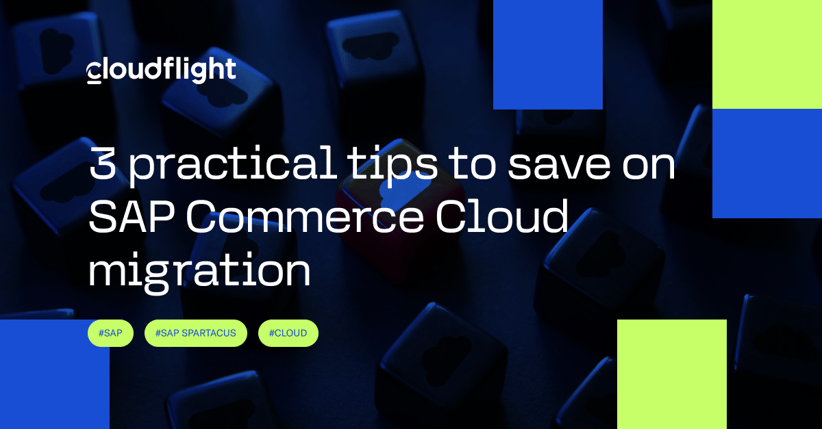Last November, SAP announced that SAP Commerce 2205 would be the last version supported on-premises, prompting all merchants to transition to SAP CCv2 for sustained support.
Although cloud migration is vital from a tech standpoint, it doesn't directly correlate with increased sales. In this article, we'll delve into strategies to decrease this migration's cost and enhance the user experience.
1. Adopt SAP composable storefront
With its previous announcement, SAP rebranded SAP Spartacus as composable storefront, designating it as the flagship storefront solution and taking over from the accelerator storefront. Yet, the anticipated uptick in Spartacus implementations hasn't materialized, possibly due to a misconception about needing a cloud migration first.
In fact, decoupling your storefront before the migration might be the key strategy to reduce its cost. Clients who preemptively adopted Spartacus are now at an advantage. Their upcoming cloud migration is simpler and more economical. This benefit is largely because Spartacus, being decoupled, interacts with SAP Commerce exclusively via API, streamlining the complexities associated with SAP Commerce.
So here’s hint number one: start with your storefront migration. Doing so not only preps your SAP Commerce for the cloud but also revamps the front end, providing customers with an enhanced user experience.
Here's a significant point to note: migration tasks focused primarily on the front end can account for a considerable portion of the overall effort. By transitioning to the composable storefront ahead of time, businesses can potentially save between 25% to 35% in migration efforts.
2. Parallelize the work
After migrating SAP Commerce to the cloud, businesses often contemplate transitioning to composable storefront. However, this sequential approach might involve investing in components that will be discarded in future projects. It’s a pure waste.
Hint number two: migrate to CCv2 and composable storefront at the same time. While this demands a more substantial initial outlay, it assures a lowered overall cost and quicker ROI, enabling you to introduce a superior product to the market more rapidly.
3. Turn the challenge into an opportunity
Lastly, don't view migration as just a tech-centric task. Ponder the added value that can be integrated during this phase. Perhaps it's an apt moment to revamp designs, initiate a UX audit, or reevaluate custom features. Think innovation, not mere duplication.
Final thoughts
While navigating the migration to SAP Commerce Cloud might be a technical obligation, it’s also an opportunity to optimize costs, enhance user experience, and innovate. Approach migration holistically, adopt SAP composable storefront early, parallelize the migration efforts, and use it all as a catalyst for positive change and growth.
Published January 11, 2024











